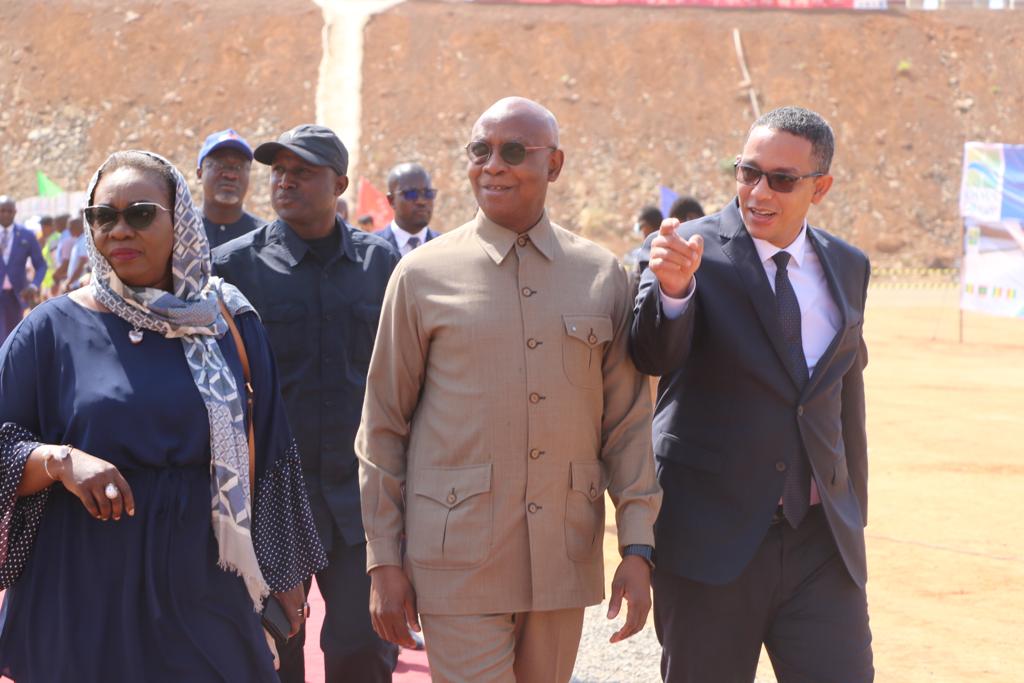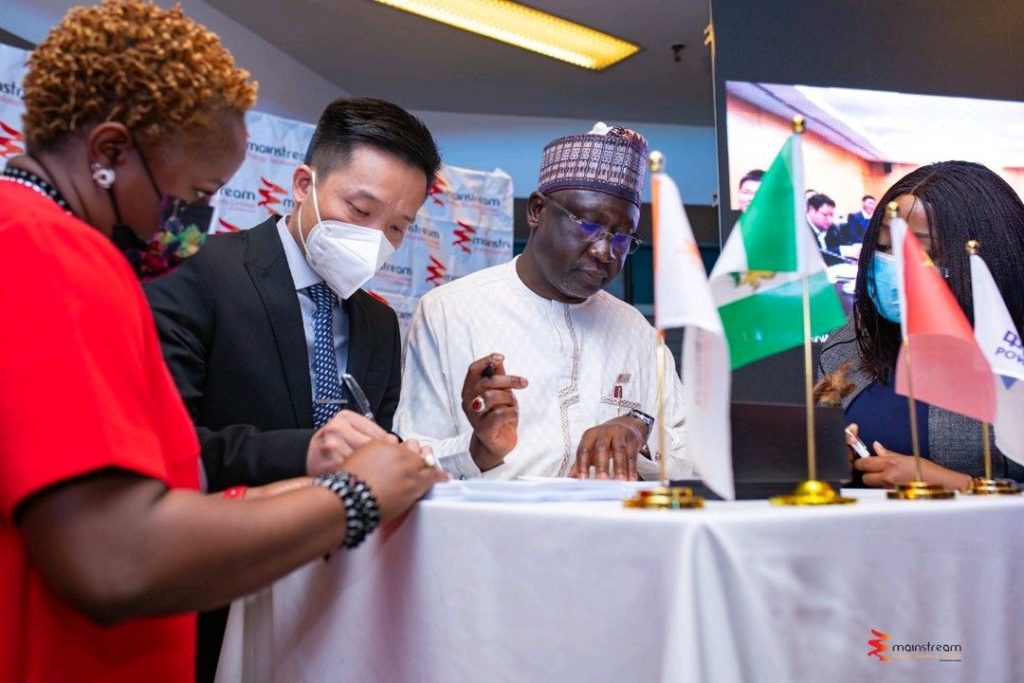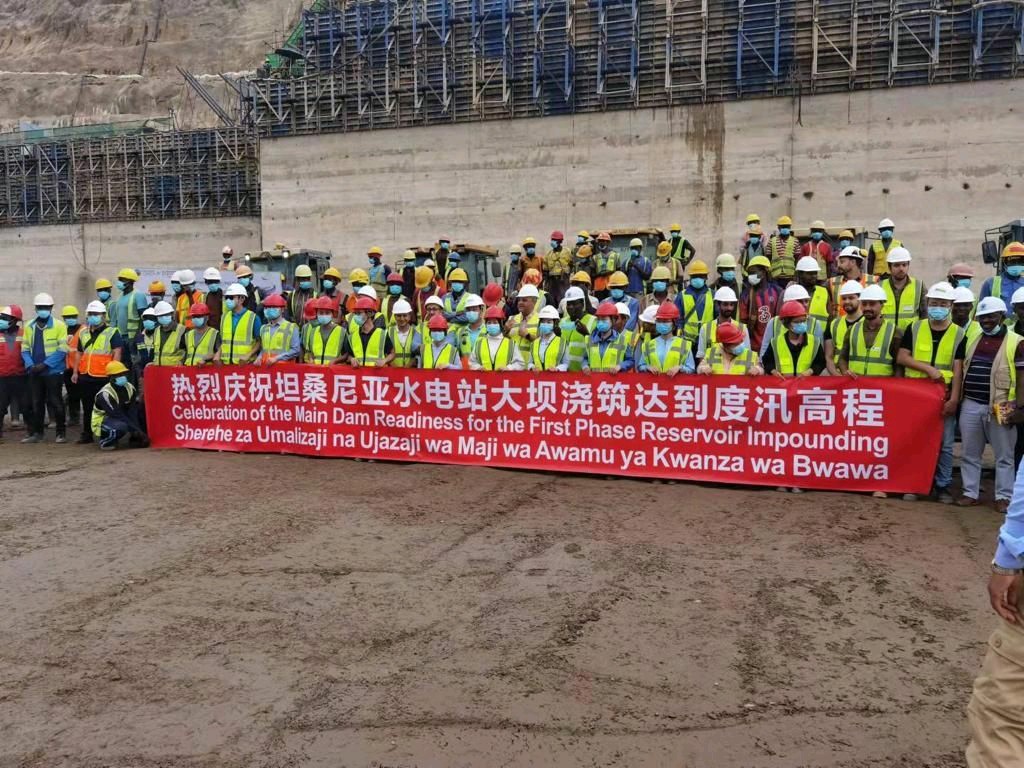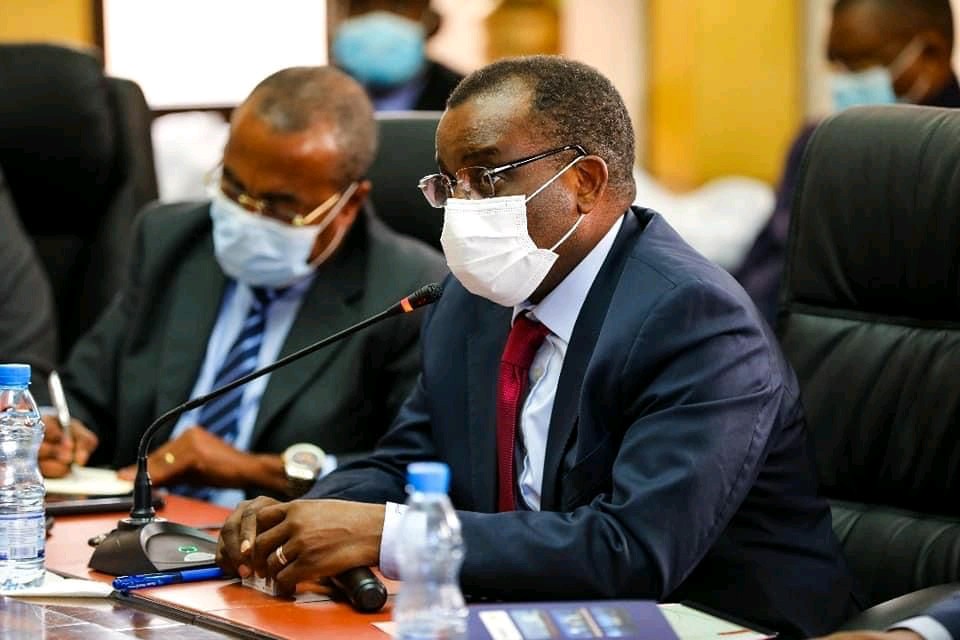Hydropower

Mali: official inauguration of the 140 MW Gouina hydropower plant
Mali, Guinea, Mauritania and Senegal celebrated over the weekend the inauguration of the 140 MW Gouina hydropower plant, whose units were commissioned earlier this year. The facility was built as part of a multi-project plan involving the construction of several hydroelectric stations along the Senegal River, where the hydroelectric potential is estimated at 1,200 MW. The project is owned and managed by the Organization for the Development of the Senegal River (OMVS), which received a loan of $ 110 million from the International Development Association of the World Bank several years ago for this integrated management programme for the region’s water resources. The Gouina plant is the third hydropower project of this type to be commissioned by the OMVS after the 205 MW Manantali plant in 2002 and the 60 MW Félou plant in 2013.
Read more »
Mozambique to collaborate with IFC on new $4.5 bn, 1.5 GW hydropower project
The International Finance Corporation (IFC) has announced the signing of a collaboration agreement with Mozambique’s Ministry of Mineral Resources and Energy (MIREME) on the implementation of the 1.5 GW Mphanda Nkuwa Hydropower Project and its associated transmission facilities. The $4.5bn project will be constructed in Mozambique’s central Tete Province that borders Malawi, Zambia, and Zimbabwe. It will supply power both to the domestic market and to South Africa, and include a 1,300k high voltage transmission line connecting it to Maputo. Commissioning is expected in 2031. “IFC will work with the government in collaboration with GMNK to structure this important project, including the review of technical design, environmental safeguards, commercial and financial structuring,” the IFC said in a statement.
Read more »
First turbine comes online at Grand Ethiopian Renaissance Dam
On Sunday, Ethiopian Prime Minister Abiy Ahmed presided over a ceremony that marked the start of power generation at the Grand Ethiopian Renaissance Dam’s first turbine (375 MW). The 6,000 MW hydroelectric station is Africa’s biggest and most controversial and has been in construction for about a decade. The multi-billion dollar mega-dam was built on the Blue Nile, where most of the waters that flow into the Nile River in Sudan and Egypt originates. While two key treaties were signed in 1929 and 1959 on the use of the Nile waters, Ethiopia was not part of it and went ahead with the development of the project in 2011. The dam is 1.8km-long and 155m-high with total volume of 10.4 million m3, making it the biggest dam in Africa and one of the largest in the world. Initially scheduled for completion in 2018, the dam’s construction was delayed due to poor execution of works by METEC, which was taken off the project and replaced by new contractors in 2019.
Read more »
ANDRITZ selected once again for new unit at Jebba hydropower plant
ANDRITZ has announced today it received another order from Nigerian private power generating company Mainstream Energy Solutions (MESL) for the modernization of unit 2G5 at the 578.4 MW Jebba hydroelectric station in Nigeria. ANDRITZ was the original manufacturer for all six fixed blade (propeller) type runners at the hydropower plant, which was commissioned back in the 1980s. The technology group is now working with MESL on a general rehabilitation programme to extend Jebba’s life for the next 40 years and improve the plant’s reliability. In 2021, it had already been awarded a contract for the rehabilitation and life extension of unit 2G6. Jebba is one of two key hydroelectric stations that were privatized and are now operated by MESL under a Concession Agreement. The other facility, Kainji, is also undergoing rehabilitation and expansion. In December last year, MESL selected the Power China Huadong Engineering Corporation for rehabilitation works there, covering the rehabilitation of the Unit 1G9 (80 MW) and the installation of units 1G3 and 1G4 (110 MW each). Full details on the 760 MW Kainji hydropower plant and the 578.4 MW Jebba hydropower plant in Nigeria are available in the “Projects” section within your Hawilti+ research terminal.
Read more »
Mainstream Energy Solutions selects contractor for an additional 300 MW at Kainji hydropower plant in Nigeria
Mainstream Energy Solutions (MESL) signed a contract yesterday in Abuja with Power China Huadong Engineering Corporation for rehabilitation works at its Kainji hydroelectric facility in Nigeria. MESL has been operator of the 760 MW Kainji hydropower plant and the 578.4 MW Jebba hydropower plant in Nigeria since their privatization in 2013. The contract signed yesterday covers the rehabilitation of the Unit 1G9 (80 MW) and the installation of units 1G3 and 1G4 (110 MW each) at Kainji. Rehabilitating Nigeria’s First and Oldest Hydropower Facility Kainji can accommodate a total of 12 turbine-generator units but originally consisted in only eight of them, numbered from 5 to 12. Combined, these are able to support 760 MW of generation capacity. The first of those units were commissioned in 1968, making the facility Nigeria’s first and oldest hydropower plant. When MESL acquired the station in 2013 and became its private concessionaire, Kainji’s available capacity was at 0 MW. Since privatisation, five units were successfully rehabilitated (units 5, 6, 7, 11 and 12) and the plant currently operates with 520 MW of capacity connected to the grid. Unit 7 was the last one to be rehabilitated and was connected to the Nigerian grid in Q4 2021. The contract signed yesterday with Power China Huadong Engineering Corporation will notably focus on rehabilitating a sixth turbine-generator (unit 9) to bring back another 80 MW online. This will eventually leave only two of the original eight units to be recovered and rehabilitated: unit 8 and unit 10. Expansion from New Units While the facility is already widely seen as a true success story of Nigeria’s power privatisation programme, more can be done. The project with Power China Huadong Engineering Corporation will indeed see the installation of two new units of 110 MW each. In doing so, MESL is going back to the original design of the power plant which provided for the accommodation of units 1 to 4. These never materialized, but the required civil structure and open pits are still in place to do so. The two new turbine-generator units will represent the initial unit 3 and unit 4 and add another 220 MW of generation capacity to the complex. The agreement signed yesterday is significant and will eventually see Kainji’s available generation capacity increase from 520 MW today to 820 MW in the near future. Moving forward, MESL still has the opportunity to recover units 8 and 10, representing a combined 160 MW, and install units 1 and 2 to add another 220 MW. In total, the Kainji facility could ultimately support up to 1.2 GW of clean power generation for the Nigerian grid. Details on the Kainji and Jebba hydropower plants in Nigeria can be found in the “Projects” section within your Hawilti+ research terminal.
Read more »
Tanzania celebrates key milestone at 2 GW Julius Nyerere hydropower plant
Earlier today, Tanzania celebrated the readiness of the Julius Nyerere’s main dam for its first phase of reservoir impounding. The project’s water storage basin reached a depth of 95m in its mid-section, allowing for the start of water filling. The project has been under construction since 2019, with the engineering, procurement and construction executed by the Egyptian consortium of Elsewedy Electric and The Arab Contractors. The facility involves a 134m RCC gravity dam and appurtenant structures, with expected reservoir length of 100km, covering an area of about 1,350km2. Upon completion, the 2,115 MW project will be one of sub-Saharan Africa’s biggest hydroelectric facility. It is expected to be able to generate up to 6,307 GWh a year. Full details on the Julis Nyerere Hydropower Plant (Rufiji) are available in the “Projects” section within your Hawilti+ research terminal.
Read more »
Gabon on the move: what you need to know ahead of the Gabon Oil, Gas & Energy Summit in Libreville this week
Nested in the Gulf of Guinea, Gabon has built itself a reputation of environmental stewardship and sustainable development of its natural resources. The country of less than 2.5m notably hosts Africa’s largest forest elephant population and is covered at 88% by rainforest. Despite being an established offshore hydrocarbons province, Gabon is steadily diversifying away from oil. A public-private partnership with ARISE IIP resulted in the establishment of one of Africa’s most modern and efficient free zones now serving a growing industrial and mining base. The country is in fact one of the world’s top producers of manganese, of which it exported almost 4m tonnes in the first half of the year. Gabon has also successfully industrialised its wood industry to become a recognised exporter of timber: between January and June 2021, the country produced over 1 million m3 of logs. Gabon’s economy remains fairly diversified compared to that of its African neighbours. Its oil & gas sector’s contribution to the GDP stood at 37.7% in 2020 and represented 33% of government revenues last year. Oil exports also accounted for 70% of total export revenues. Maintaining the pace of investment in the country’s hydrocarbons value-chain remains a priority for the government, especially as it seeks to develop gas-based economies and use oil revenues to invest in sustainable infrastructure and the conservation of its environment. A Focus on Reversing Production Decline Gabon is member of the Organisation of Petroleum Exporting Countries (OPEC) and produced an average of 183,000 barrels of oil per day (bopd) between January and September 2021. This makes it sub-Saharan Africa’s fourth largest producer, behind Nigeria, Angola and Congo-Brazzaville and more or less at par with Ghana. Production has been in decline for several years and has stagnated in the recent past. Gabon launched its 12th Licensing Bid Round before Covid19, which it is just concluding now. The round generated relatively strong interest given market dynamics, and award letters started being issued this month with BW Energy provisionally securing two blocks along with partners Panoro Energy and VAALCO Energy. Source: DGEPF The award of new exploration acreage is much needed in order to encourage seismic acquisition and exploratory drilling and ultimately maintain production in the medium-term. Exploration has so far been a miss this year, with BW Energy’s Hibiscus Extension appraisal well (DHIBM-2) encountering water in the first half of the year, and its Hibiscus North exploration well (DHBNM-1) failing to deliver on pre-drill resource estimate in July. An Independents’ Market Gabon is an independents and national oil companies (NOCs)’ game. Shell Gabon sold all its assets in the country to Assala Energy in November 2017, and Total Gabon sold seven of its non-operated mature fields and operatorship of the Cap Lopez Oil Terminal to Perenco in July 2020. Beyond Assala Energy and Perenco, Gabon’s upstream sector is dominated by Maurel & Prom, VAALCO Energy and BW Energy along with a few NOCs such as Petronas. TotalEnergies remains the only IOC still operating upstream assets in the country. Gabon continues to offer significant opportunities for independents, both onshore and offshore. In February 2021, Panoro Energy acquired Tullow Oil’s 10% working interest in BW Energy’s Dussafu Marin Permit. A New Strategy to Monetise Domestic Gas Gabon has been working for a few years on a new strategy to monetise gas to generate additional electricity and develop new gas-based industries. The move benefits from significant political will and support and is one of the key pillars of the country’s new three-year plan over the 2021-2023 period, dubbed Plan to Accelerate the Transformation (PAT). Because Perenco represents most of the country’s operated gas production, it will play a major role in the development of Gabon’s domestic gas market. The company completed this year studies and plans for the new 10,000 metric tonnes Batanga LPG plant, where construction is expected to start before the end of the year. In July 2019, Gabon’s Ministry of Petroleum, Gas and Mines had also signed an agreement giving the Olowi Field to Perenco as its new operator. The field was developed between 2005 and 2018 by Canadian Natural Resources and is now to be redeveloped under an integrated gas project. Source: DGEPF Finally, an expanding gas industry will benefit the power sector. Gabon already runs several gas-to-power facilities and in September 2021, the Gabon Power Company (GPC) signed a landmark Concession Agreement with Wärtsilä for the development, supply, construction, operation, and maintenance of a new 120 MW gas-to-power project in Owendo, next to the capital city of Libreville. A Diversifying Energy Basket Beyond gas, Gabon is also expanding its energy sector with the development of its solar and water resources. Several hydropower plants are currently being developed, When it comes to hydroelectricity, Meridiam and the Gabon Power Company successfully reached financial close on the 35 MW Kinguélé Aval in July this year. Additional facilities include the 15 MW Dibwangui hydropower plant and the 73 MW Ngoulmendjim hydropower plants, whose power purchase agreements (PPA) were signed with Eranove in 2018. Solar energy is also making its entry into the country’s grid with the signing last August of a contract with the Turkish group Desiba Energy for the construction of a 20 MW solar power plant in Doubou, in the province of Ngounié. To find out about investment and business opportunities in Gabon, register for IN-VR’s Gabon Oil, Gas & Energy Summit hybrid conference taking place in Libreville and online between October 20th-22nd. More information at https://www.in-vr.co/gabon. All details on ongoing and future projects across Gabon’s energy sector are available within your Hawilti+ research terminal.
Read more »
Why wind and solar would offer the DRC and South Africa better energy deals than Inga 3
by Grace C. WU, Smith Conservation Fellow, University of California Santa Barbara and Ranjit Deshmukh, Assistant Professor in the Environmental Studies, University of California Santa Barbara Seven years ago the Democratic Republic of Congo (DRC) proposed the Inga 3 – a 4.8GW hydropower project on the Congo River – with great fanfare. Third in a series of dams that would form the Grand Inga complex on the Congo river, the project was touted as a solution to southern Africa’s energy deficit woes and a way for the DRC to participate in regional economic development. Seven years later, development of Inga 3 has yet to begin. The project continues to be stymied by conflicts. For example, earlier this year, one of the partners, a Spanish company, pulled out of the consortium. But DRC president Félix Tshisekedi continues to push to revive the plans. According to South Africa’s Integrated Resource Plan (IRP 2019), the country plans to import at least 2.5GW of electric power from Inga 3 (or more than half of the original 4.8GW design), a commitment reiterated recently by South African president Cyril Ramaphosa. The largest remaining fractions of Inga 3’s electricity generation would be purchased by the mining industry in the DRC. Less than 10% of the electricity from Inga 3 is expected to supply the DRC’s residential electricity needs. Currently 90% of the population in the DRC lacks electricity access. Does Inga 3 make sense? We set out to answer this question in our research paper. We concluded that pursuing large hydropower dams in the DRC is financially risky for South Africa. We assessed the feasibility and cost-effectiveness of renewable energy alternatives to Inga 3 to serve the energy needs of both the host country, the DRC, and the main buyer, South Africa. Better alternatives The hydropower potential at the Grand Inga site on the Congo River, the largest remaining untapped hydropower potential in the world, has drawn the interest and attention of development banks and regional governments for the past several decades. But there’s been dramatic change in the energy sector in the past five years. In particular, the cost of alternative energy sources like wind and solar has changed the game for cost-competitive and sustainable energy generation that can be rapidly scaled up. There are more efficient ways to address severe energy deficits quickly and cost-efficiently. For example, wind projects take only one to three years to build and most solar photovoltaic projects take a year. Both incur lower costs than similar-sized hydropower projects, which take five to 10 years to build. The latest construction time estimate for the Inga 3 is eight years. Longer build times lead to greater costs due to interest on capital. And analysis of data from past large hydropower dams shows that these projects cost twice the amount they quoted before the start of the project. We found that, even without considering the large environmental and social impacts, the dam is an unsound investment based on plain economics. Options for South Africa In our study we compared alternative energy sources for South Africa, the largest potential buyer of Inga 3 electricity. We found that a mix of wind, solar photovoltaics, and some natural gas would be more cost-effective than Inga 3 to meet future demand. We reached this conclusion after examining the impact of several uncertain factors that could change overall costs. These included: Inga 3 performance, Inga 3 cost overruns, wind and solar performance, and the demand for electricity in the future. The only scenarios in which Inga 3 was more cost-effective were those that assumed significantly lower than average wind energy performance. In the case of the DRC, we found that wind and solar generated electricity would be cheaper than the World Bank-estimated price of electricity from Inga 3 for both retail customers in Kinshasa and mining customers in the Katanga province. These renewable energy technologies are more suitable for providing decentralised and off-grid access to electricity to DRC’s geographically dispersed population. The DRC has since proposed to more than double the initial capacity examined in our study. This would obviously change the economics described here, though President Tshisekedi has expressed preference for the original smaller 4.8GW proposal. Of course, economics should be only one of many factors to weigh when choosing energy technologies. Like many other mega hydropower projects, the Inga 3 has been fraught with potential severe social and environmental impacts. At least 35,000 people would be displaced by Inga 3 alone. The potential ecosystem impacts include the decline of fisheries upstream of the dam, threats to freshwater diversity and mangroves in the Congo delta, and reduced carbon sequestration through reduced organic sediment transport downstream to the ocean. Choosing a better course Time and resources wasted over the last decade entertaining a high-risk mega project that may not even be realised could have been fruitfully spent pursuing opportunities like wind and solar technologies that are cost-effective today. The DRC government and international financial institutions like the Africa Development Bank backing the Inga 3 can still change course to choose more sustainable and lower risk avenues to provide cost-effective access to energy and spur economic development. This article is republished from The Conversation under a Creative Commons License. Read the original article.
Read more »